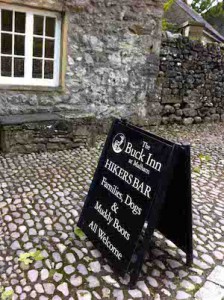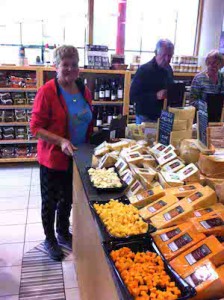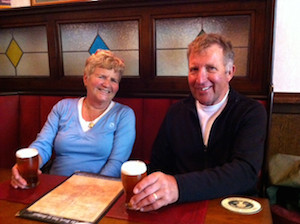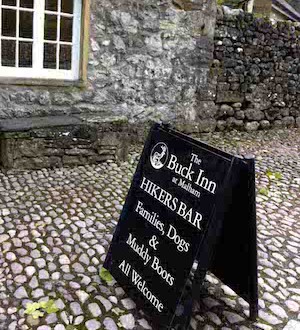 After weeks of planning and a 26 hour plane journey we were finally on British soil ready to embark on a ‘Grand Tour’ of England, Scotland and Ireland.
After weeks of planning and a 26 hour plane journey we were finally on British soil ready to embark on a ‘Grand Tour’ of England, Scotland and Ireland.
One special reason for making this journey was to find out more about John’s ancestor Thomas Urquhart McKenzie. We knew he had come ashore in Wellington in 1840, the year the Treaty of Waitangi was signed. But his earlier life remained a mystery which we had not been able to solve by searching the internet. We were hopeful that a visit to the area where he was born might provide further clues
Travel weary but excited to be there we took a short bus and train journey to Fareham where John’s old colleague Dai was waiting to meet us. It was 25 years since we had last met up with him and his wife Cissy so it was quite a reunion!
Fareham is a small peaceful town near Portsmouth, a lovely place to unwind after the long journey. Their living room looked out over a spacious garden where three foxes are regular visitors but they stayed out of sight while we were there.
Dai soon persuaded us to forget about jet lag and to make the most of our short visit so the next morning we set off to the naval museums at Portsmouth. We viewed the partially restored wreck of the Mary Rose, a Tudor ship built in 1510. It was King Henry the V111’s flagship which sank in the Portsmouth harbour in 1545, was discovered in 1972 and finally raised again in 1982. Half of the wooden hull remains and its restoration is proving to be a mammoth task.
The adjoining museum’s treasure trove of many objects from on board included sailors’ skeletons, instruments, long bows and even the skeleton of the ship’s dog, employed as a rat-catcher.
We also toured HMS Victory, the ship on which Nelson died at the battle of Trafalgar in 1805. With his final breath he uttered the words “Kiss me Hardy.”
‘Not indicative of his sexual orientation,’ commented John as from all accounts he was quite a ladies’ man.
The Victory was in great condition and is in fact still on the British naval ship list. But sailors of 200 years ago were obviously much shorter than today and John got the head scars to prove it after several encounters with overhead beams.
The following day we all went to Winchester where I was greatly looking forward to lunching at a restaurant established by one of my food heroes, Hugh Fearnley-Whittingstall, renowned author of River Cottage Veg Every Day.
On the way we dropped into the Great Hall built in medieval times. On one of its walls hangs a great round table similar to that supposedly used by the legendary King Arthur and his knights but built 300 years later with a Tudor Rose in King Arthur’s place. Adjoining the Great Hall was Queen Eleanor’s Garden, a recreation of an enclosed medieval garden and a restful place to spend a while.
The restaurant was in a converted mill where the heating was inadequate for the large space so by the end of the meal we felt decidedly chilly. And although my minestrone soup was tasty and created with fresh locally sourced ingredients the bread served alongside was a real disappointment. Sometimes a dream doesn’t quite live up to its expectations!
York
York was our next destination. We travelled by train. There was a lot to explore in this most charming of old English cities.
We walked through the Shambles, Europe’s best preserved medieval street, very narrow with overhanging timber framed buildings, and climbed the old city walls to enjoy the view before heading off to the museum gardens where tulips were out in full bloom despite the cool early summer weather. Here also were crumbling remains of Roman buildings.
The museum itself was well laid out giving a great overview of all who had ruled York over the centuries from Anglo Saxons to Romans then Vikings. Curiously there was also a display of extinct and endangered creatures including a moa and kiwi.
The magnificent York Minster Cathedral was a must with its glorious stained glass windows and high vaulted ceilings. The present cathedral was built over earlier churches and some remains the Roman building can still be viewed downstairs. The tombstones replete with ornate and ostentatious sculptures of the deceased just begged to be photographed.
At the National Railway Museum in York with its large collection of railway engines from different eras it was the temporary exhibit of Winston Churchill’s funeral train which especially caught my eye. Thousands had stood by the trackside to pay their last respects as the steam locomotive rolled by. The carriage which carried his coffin was massive.
One morning we entered a pretty little tea room where we had the famous British treat: scones with jam and clotted cream. For years there has been an ongoing dispute between Cornwall and Devon as to whether one should slather the cream on and then the jam, or the other way round. During the recent election campaign PM David Cameron had made a major gaffe while in Devon by declaring that ‘it all tastes the same.’ which was widely reported. After trying it both ways I agreed but wisely kept my opinion to myself.
Dining out in York was surprisingly reasonable especially if you looked out for specials and set menus as we did. One evening we ate one of the nicest Italian pasta dishes we have ever eaten.
Towards the end of our stay in York we were joined by Margreet and Neil, my sister and brother in law. Neil has Parkinson’s disease and unsure of what the future may hold for him they are travelling the world and enjoying each moment. Apart from being great company, travelling as a foursome would halve the costs of car hire and the rental of the apartments we had booked.
We picked up our rental car, a Vauxhall Insignia, with manual controls. It didn’t have a lot of power, but it was economical to run and had a large boot which was just as well. None of us were travelling light having been forewarned that we would need to be prepared for all kinds of weather from very cool to a heatwave in London.
The Yorkshire Dales
In the Yorkshire Dales and then the Lake District we soon settled into a pattern of nice long walks and convivial and inexpensive meals in the local pubs.
In Malham we stayed in Beck Hall, a 300 year hotel where in the communal lounge a fire was lit and kept burning all day (even though it was meant to be summer). Here we gossiped with other groups of cheery old walkers some of whom were much older than us but still keen to ramble.
The surrounding countryside was very pretty here with its meadows, ancient dry-stone walls and woodlands. Most spectacular though were its limestone cliffs, crags and scars.
Bill Bryson, author and former Malhamdale resident remembers it fondly:
“I won’t know for sure if Malhamdale is the finest place there is until I have died and seen heaven (assuming they let me at least have a glance), but until that day comes, it will certainly do,” he wrote.
We hiked along a small part of the Pennine Way to the Limestone Cliffs of Malham Cove and climbed up 400 rocky steps (an extreme workout for my hip replacement). From here we spotted peregrine falcons going to their nest in caves in the cliff.
A long walk deserved a long beer afterwards so John and Neill got to sample the local habit of flat warm ales while Marg and I had cold ciders which were much more refreshing.
Hoping to catch sight of some rare species of birds we took a stroll in Malham Tarn (a National Reserve) but with meagre results. Great crested grebe, moorhen, coot, tufted duck and teal have made their home here but all we caught sight of were some ducks. No matter, it was a lovely walk, the weather was fine, and the tarn at the end of it (the highest limestone lake in Britain) was beautiful.
From the Yorkshire Dales we drove to Portinscale just out of Keswick in the Lake District.
 On the way we called at the Wensleydale Cheese Factory and after plenty of tastings (including cheeses unusually flavoured with cranberries, ginger and plum and salted caramel) bought a selection to enjoy with a glass of wine later.
On the way we called at the Wensleydale Cheese Factory and after plenty of tastings (including cheeses unusually flavoured with cranberries, ginger and plum and salted caramel) bought a selection to enjoy with a glass of wine later.
Keswick was a very touristy town with many shops selling hiking gear, or food or ales. There are many challenging mountainous hikes to do here but in deference to our age we found an easier and relatively flat walk along a disused old railway line which took up a whole morning. Then caught a bus back and had a snoozy afternoon.
A bevvy of famous literary figures once lived in the Lake District including Beatrix Potter and William Wordsworth.
Using our NZ Heritage Passes (at $50 for two, a great buy as they gave us free access to all National Trust properties in England and Scotland), we visited Hilltop, Beatrix Potter’s first home filled with all her favourite things and the Beatrix Potter Gallery where her intricate drawings are on view.
The usual friendly and knowledgeable National Trust volunteers were on hand to fill us in on the background stories. There was much more to Beatrix Potter than her cutesy Peter Rabbit Tales. She was a staunchly independent woman and became a farmer who owned more than a dozen farms.
Afterwards we had pots of tea in her village and headed off for an hour’s walk around a tarn in refreshingly chilly weather. It was hard to believe at times that summer was almost here.
We encountered a lot of dog walkers. English people love their dogs and these were invariably well behaved and trotted obediently alongside their owners unleashed.
We also paid homage to Wordsworth at a home he once lived in called Alan Banks. Outside a billboard announced that muddy boots and dogs were welcome to come in. it was soon apparent why as the paint had peeled off all the interior walls and there was much restoration to be done.
There were great views from the windows of the green and verdant landscape which had inspired his poetry, but not a single golden daffodil at this time of year. A small group of birdwatchers were peering out of the bay window with their binoculars and seemed elated to spot a woodpecker.
John was keen to visit ‘The Circle of Stones’ on the way home, much smaller than Stonehenge but still impressive. Why they were placed there and by whom is a mystery that may never be solved but rituals must once have taken place there.
 Another pub dinner was called for at the end of the day at our adopted ‘The Potter’s Arms.” We have fallen in love with convivial English pubs where people of all ages can get together for a few drinks and a decent meal. But the meals are huge!
Another pub dinner was called for at the end of the day at our adopted ‘The Potter’s Arms.” We have fallen in love with convivial English pubs where people of all ages can get together for a few drinks and a decent meal. But the meals are huge!
While John and Neil once again relished their pies and hot chips washed down with an ale I thought fish cakes could be a lighter option but on my plate appeared 5 new potatoes, two fish cakes the size of cricket balls and a few spoonsful of parsnip and peas.
On our last day in the Lake District we did a substantial two hour hike around scenic Buttermere Lake and spent the rest of the day lounging around as the following day would be an all day ride to Scotland.
Although John and Neil have mastered the art of driving along very narrow roads with stony walls on either side the wider roads we will be travelling on from now on will make for easier driving.










Join the Discussion
Type out your comment here:
You must be logged in to post a comment.